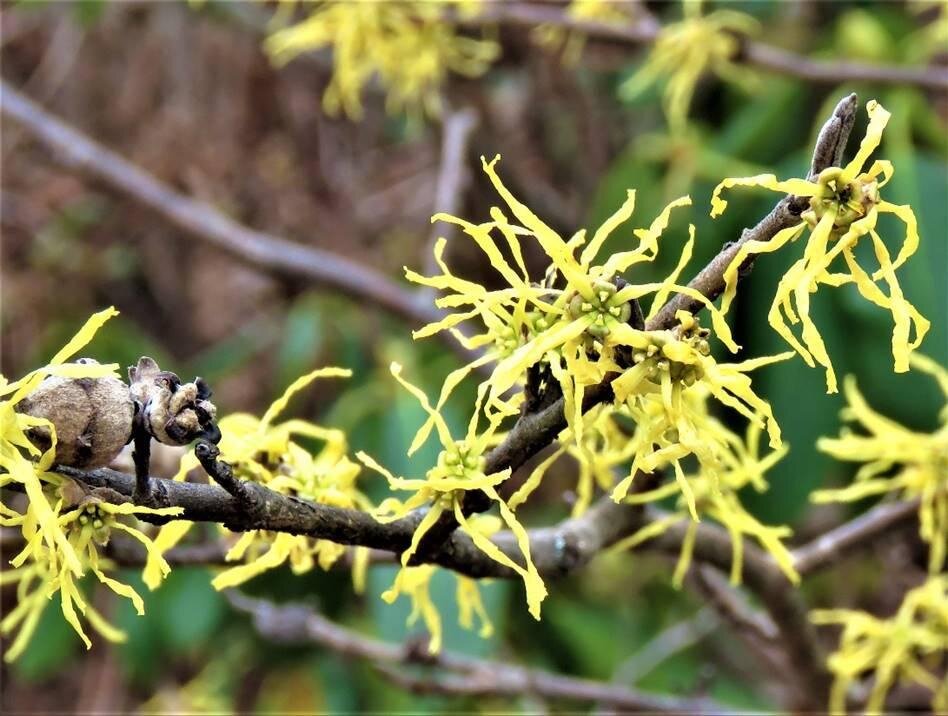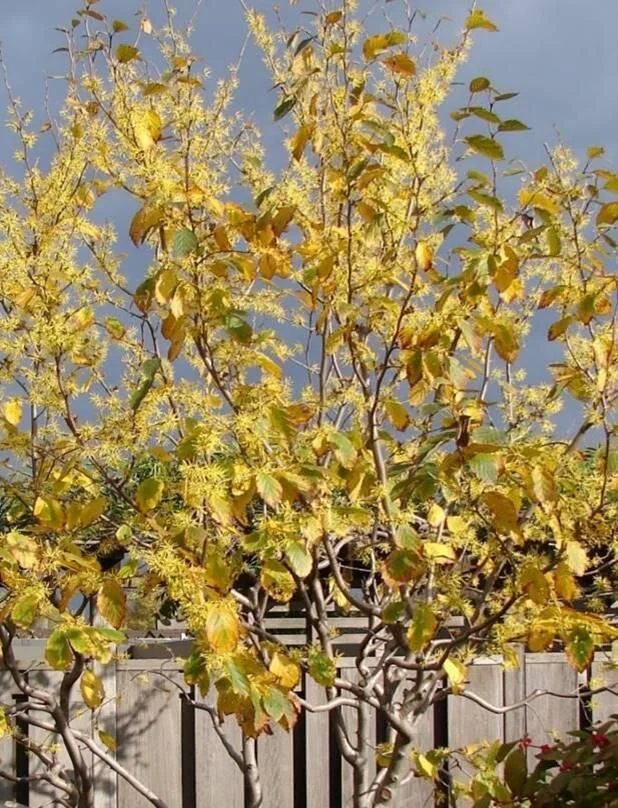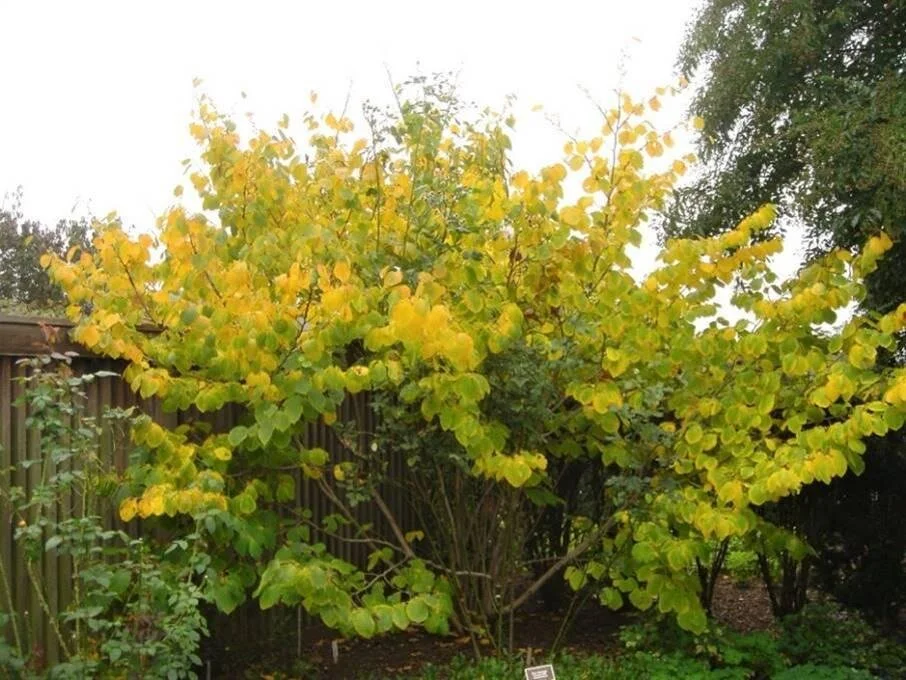Plant of the Month November 2020: Common Witch Hazel
The spidery blooms of Common Witch Hazel light up a late fall woodland.
Photo by Kevin Howe
Every fall as the leaves begin to drop and little else dares to bloom, I look forward to the blooms of our Common Witch Hazel, Hamamelis virginiana, a lovely small deciduous understory tree that flaunts clusters of spidery yellow blooms along its bare branches. They open just as its leaves turn vivid yellow and begin to drop in October and tend to linger in the cool fall weather through November and sometimes into early December. The bright yellow flowers consist of 4 crinkly ribbon-like petals up to nearly 1” long that literally glow in the late fall landscape. As if that is not enough, the flowers are enticingly fragrant and cold tolerant and can persist through multiple days of sub-freezing temperatures. This picturesque tree is often the last native flowering plant in our area.
Growing as a small tree or large shrub with multiple trunks, it is attractive in every season, with picturesque crooked branches forming an irregular spreading crown. Common Witch Hazels typically reach 15 – 20’ in height but old specimens can top out at 30’ in the wild. The bark itself is handsome, with smooth warm gray trunks even in old age. The leaves are leathery green and broadly oval with scalloped margins. They turn vivid yellow in the fall, before dropping and revealing a dazzling floral show. The fruit themselves are unique, developing over a long period into small woody capsules covered in velvety fuzz, and persist for a year. The following fall as the witch hazels begin to bloom, the capsules split open, forcefully ejecting two shiny black seeds up to 30’. Some claim that the tree got its name from the seeds unexpectedly whizzing by them as if by witchcraft.
Common Witch Hazels are found naturally as an understory tree in a variety of habitats in Virginia, from rocky boulder strewn ridges in the mountains to rich, moist forests, stream banks and lower slopes, and swamps in the Piedmont and Coastal plain. Tolerant of a variety of soils from sandy, to rocky, and even clay, Witch Hazels prefer moist, slightly acidic soils in part shade. Blooming profusely in full sun, they may be subject to leaf scorch if soils are too dry. This beautiful and versatile small tree has no serious pests.
The late fall flowers literally light up a pre-winter landscape when little else is blooming making common witch hazel a prized landscape plant. Witch hazels make a lovely specimen tree, but also work well massed in small groups, or planted along a woodland edge, or even in a children’s garden. When planted along a woodland path or at an entrance, their elusive fragrance entices visitors onward along the path to find the source. The blooms are particularly showy when framed against a dark or evergreen background such as American Hollies, or silhouetted against the deep blue fall sky.
Witch Hazels have been used medicinally for centuries and a mild astringent tonic is made from the bark and roots. Native Americans used this to treat colds, eye infections, dress wounds and to treat common colds. The name Witch Hazel is derived from the old English word ‘wych’ meaning ‘pliable or to bend’ and most think it refers to the flexible forked branches that have long been used as dowsing rods to locate underground water for wells, or “water witching”.
This distinctive small tree supports equally distinctive wildlife. The flowers are pollinated by night flying members of the Noctuid moth family, known as the Owlet or Winter moths. These moths are able to heat themselves by ‘shivering’ (rapidly moving their wings without flying) and can raise their body temperature enough to fly when night time temperatures drop to near freezing. Common Witch Hazels not only provide nectar for late fall flying pollinators but are a known host for the caterpillars of the beautiful Spring Azure butterfly. The seeds are eaten by a variety of game and songbirds including wild turkeys, northern bobwhite, grouse, and small mammals such as gray and red squirrels.
Brighten your fall garden by inviting this beautiful tree into your garden, and you will find yourself eagerly looking forward to late fall days and the lovely spectacle and fragrance of this tree in full bloom.
Common Witch Hazels are attractive in every season, with smooth warm gray bark and handsome fall flowers and foliage. Photo by Betsy Washington
The vivid yellow foliage of Common Witch Hazel in its fall glory. Photo by Betsy Washington



